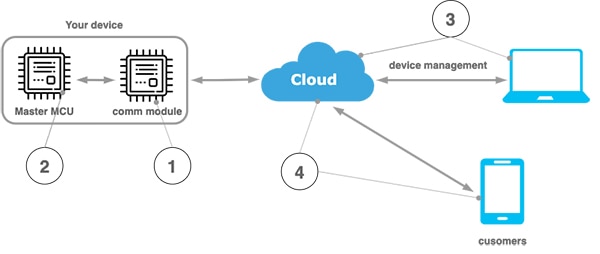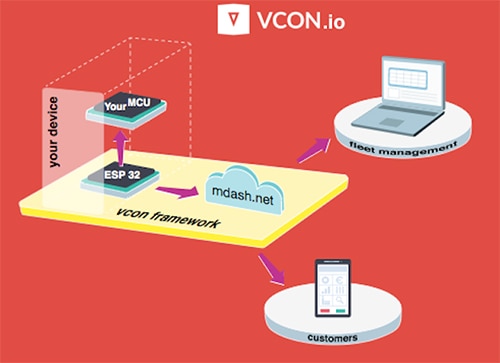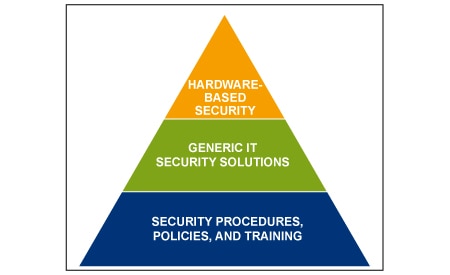The Simple Way to Design Internet Connected Products
Connecting a product to the Internet brings multiple benefits. For instance, product manufacturers can grab valuable usage statistics from products in the field in order to get an idea about how to improve them in the future. On the other hand, users get a convenient remote control and extra functionality via a mobile or web app.
Under the hood
What tasks does a company need to perform to make its electronic product Internet connected?
First, they need to choose a communication module (Wi-Fi, cellular, Ethernet, RF) and physically wire it to the main (“master”) microcontroller.
Second, they need to update the firmware on the master microcontroller to introduce networking logic, remote command interrupts, security, data exchange, over-the-air updates, and so on. Chances are that the new functionality won’t work on the current master microcontroller which would therefore require product migration to a different untested architecture, introducing a major risk.
Third, they need to develop a cloud service that terminates device connections, keeps device registry, and includes management and data storage - either on top of services like AWS IoT, Azure, or on a home-grown infrastructure.
 (Image source: vcon.io)
(Image source: vcon.io)
Fourth, they need to develop a mobile/web app for the end-customers and respective cloud portion of the system with proper access control, authentication and authorization, and data exchange mechanisms.
Suddenly, a seemingly simple goal like “let my device be remotely controlled” ends up with a set of challenges that span multiple areas of expertise (e.g., developing network-aware device firmware, a cloud service that communicates with the devices, provision and access control mechanisms, etc.), which a company might not even possess.
That’s why such projects take several years to complete. Companies end up "reinventing the wheel" by creating custom “universal communication modules” which they can stick into their products and utilize an infrastructure they’ve built.
VCON - an alternative approach
 (Image source: Espressif Systems)
(Image source: Espressif Systems)
What if such a “universal communication module” existed already?
A module that allows you to connect it to a master microcontroller to get: remote control without making any remote firmware updates for any master microcontroller (starting from a tiny 8-bit AVR from Microchip up to STMicroelectronics’ powerful 32-bit STM32F7), a cloud management service, and an access control for mobile customers. All of that, ready to go, proven and tested by existing commercial deployments?
Having worked for many years on various IoT projects with our customers, Cesanta has created such a module. It is based on the ESP32 chip from Espressif Systems. It supports Wi-Fi, Ethernet or cellular communication, and does exactly what is described above.
Our observations suggest that the implementation of a similar infrastructure takes about 1.5 - 2 years of development effort. So, if you’re an IoT product supplier looking to connect your device to the Internet in a reasonable amount of time and at an optimal cost, don’t hesitate, talk to us and try VCON today.
 (Image source: vcon.io)
(Image source: vcon.io)

Have questions or comments? Continue the conversation on TechForum, DigiKey's online community and technical resource.
Visit TechForum










